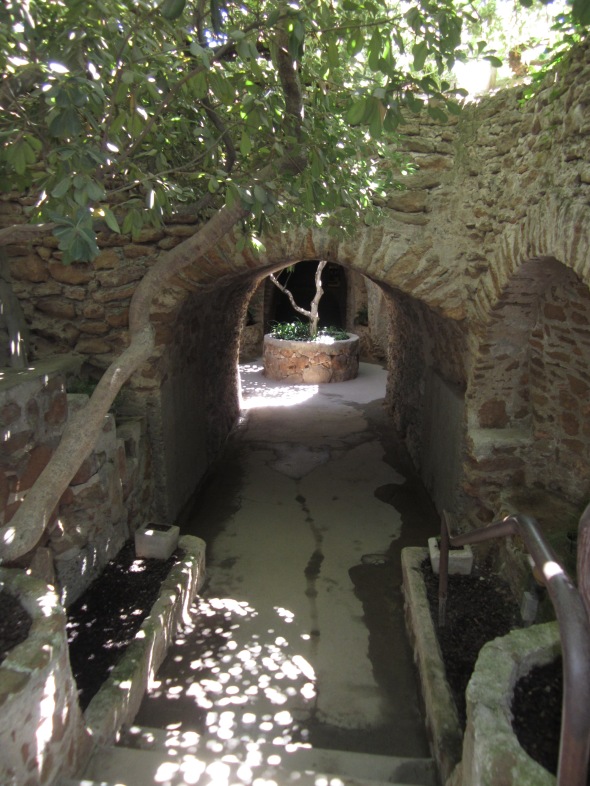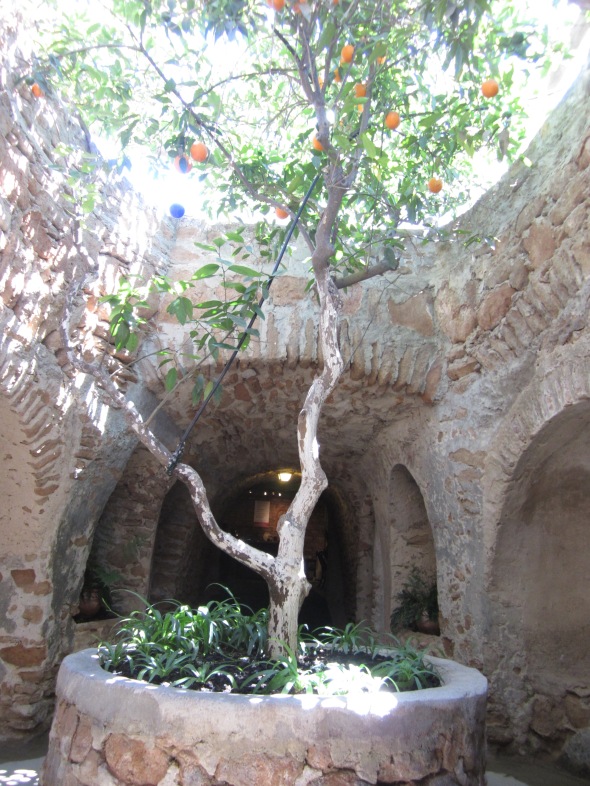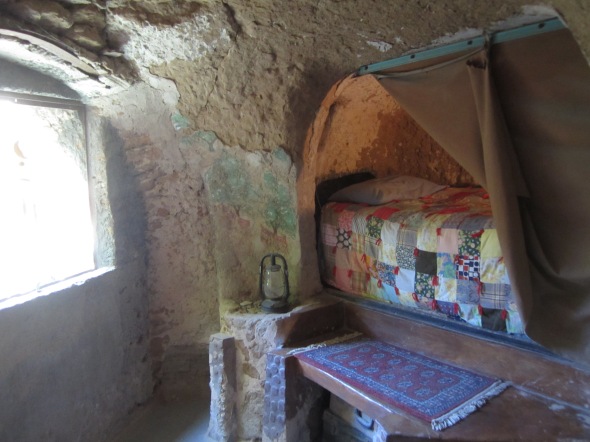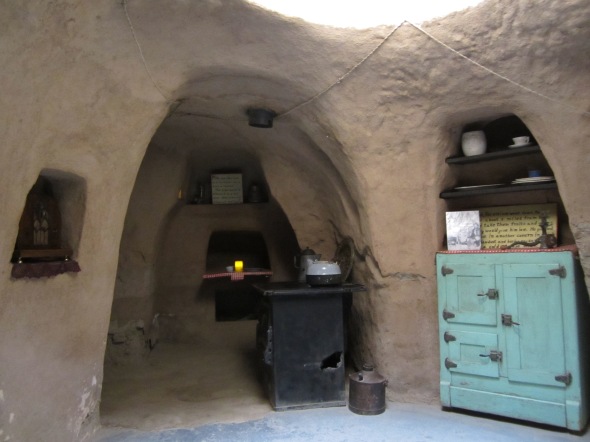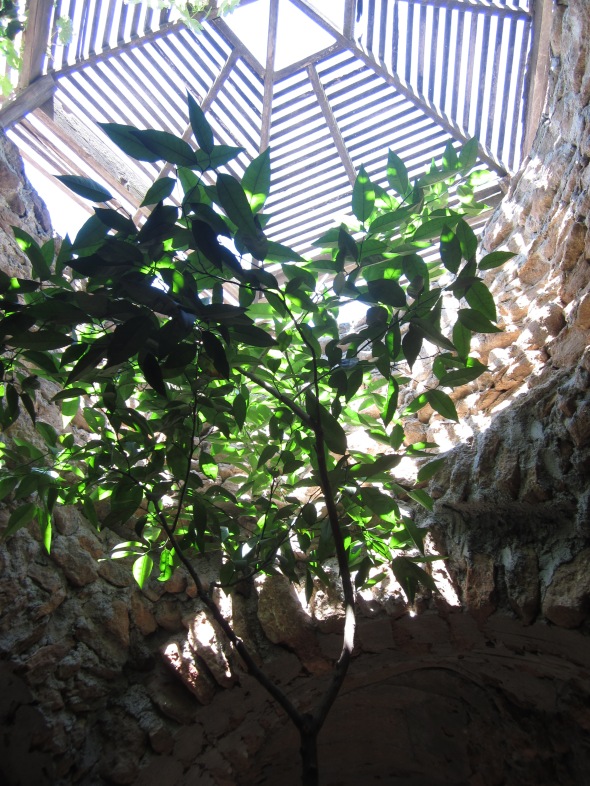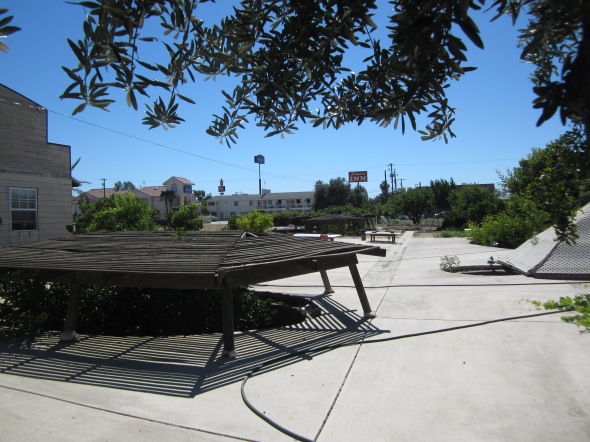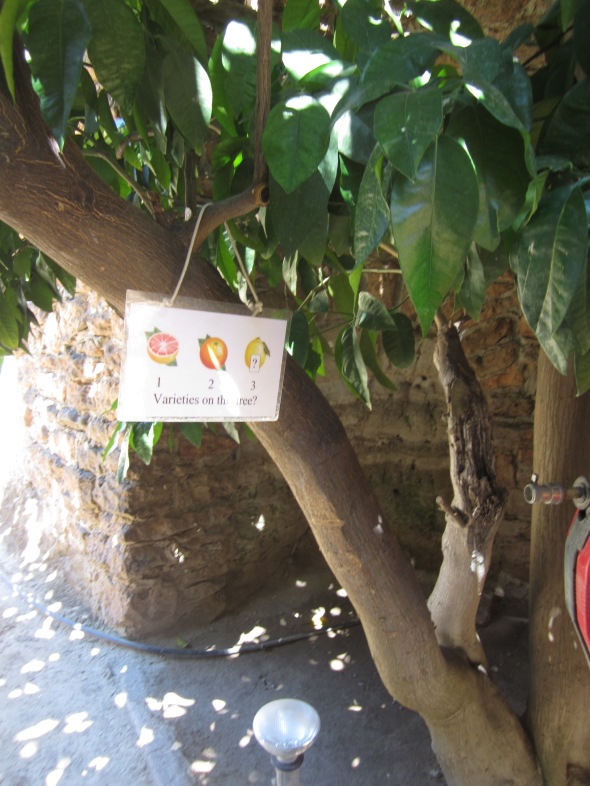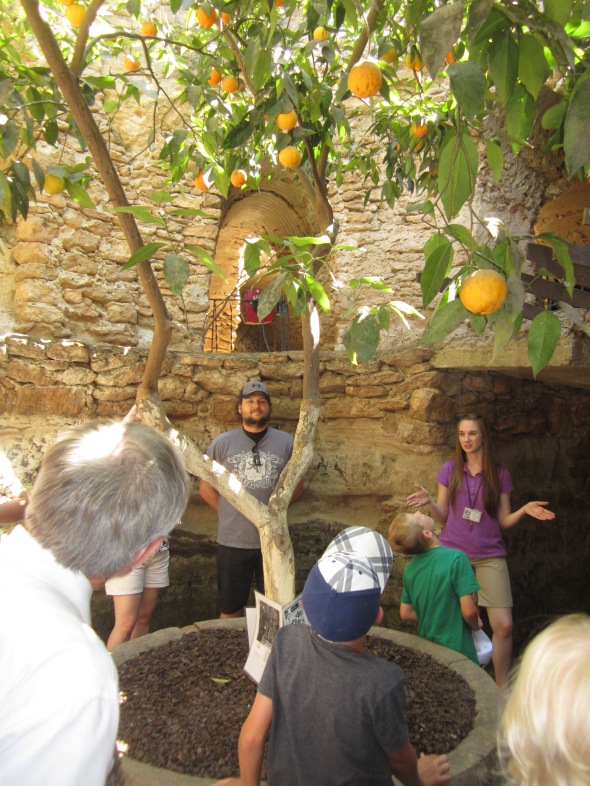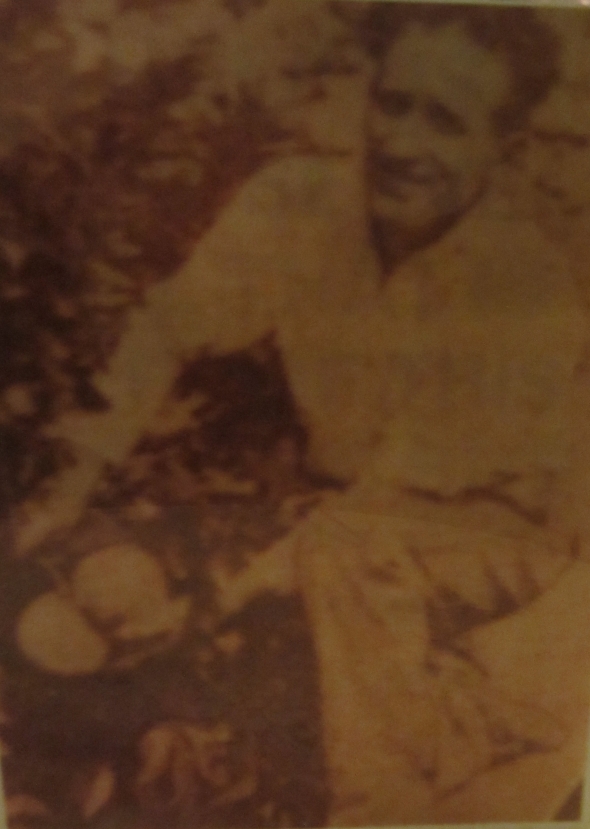The Magic of the Forestiere Undergound Gardens: a sustainable underground oasis still fruitful after 100 years
The Visionary Underground Gardens of Baldassare Forestiere
(all rights to images belong to the Forestiere Underground Gardens)

Baldassare Forestiere and his inspired life’s work- vision of an oasis shaped in stone work and filled with fruit trees, including many multi-graft citrus
While on my way to attend the Organic Stone Fruit Jubilee in Clovis, held days after the summer solstice, I just had to make a pilgrimage to a place I have been dreaming of for many years: the famed underground gardens of Baldassare Forestiere (1879- 1946). These unique and other-worldly gardens are still maintained by the Forestiere family, and are seasonally open to offer tours to the public, which I highly recommend. Much of the following stories I recall from those told by our excellent tour guide, Lisa. Any errors are my own http://forestiere-historicalcenter.com/
I drove from the 54 degree foggy coast of Santa Cruz to the 93 degree early summer Central Valley heat of Fresno, which can be regularly over 100 degrees later in July and August. It was this extreme heat that Forestiere sought to escape in his underground caverns, creating an productive oasis of citrus and many other fruit trees that grow throughout his artistic home in a never ending expression of his visions of paradise.
Immigrating from Sicily as a 22 year old unschooled and self taught skilled laborer, he left is homeland after a bitter argument with his father to seek opportunities in America to start his own citrus empire. First living in Boston and New York, he labored digging in the new subway tunnels. The unfriendly winter climate frustrated his dream to grow citrus, so he left the North East to search for suitable terrain in the famed subtropical fruitlands of Southern California, only to be thwarted by the exorbitant land prices. He heard rumors of less expensive land to the North, in the Central Valley farming town of Fresno, where he arranged to purchase 80 acres, sight unseen in 1906.
To his dismay, he discovered his new property was underlain with a shallow hardpan of cement like sedimentary rock, making planting trees near impossible. In addition the searing summer heat was especially brutal that year. Seeking to escape the heat, he excavated an underground shelter, breaking through the hard pan, and using the rock as bricks. He knew such a shelter would be cool in the summer and warm in the winter, as the earth has an average 55 degree temp year around, at a 20 foot depth. By day, he was employed as a ditch digger in the area, as he developed his property in his ‘spare time’, by himself. Never using dynamite, as he feared the damage of work already completed, he worked endlessly with only his hand tools, and his two mules, for some 40 years, until his death in 1946.
His creation was no dark, dank cave- Throughout the endless maze-like tunnels there are hundreds of wonderful ‘Roman’ stone arches, full of light and cool fresh air, amid an abundance of fruit hanging from the living trees!
Fulfilling his dream, Forestiere found that he could cultivate his beloved citrus and other fruit trees in rock walled planters under the many skylights, protected from winter frost and summer sun with lath structures, the roots remained cool in the summer and warm in the winter.
Inspired by his Roman Catholic faith, he created many plantings with patterns of threes and sevens, representing the Holy Trinity, and the Seven Sacraments. Without any written plans, he worked from his mind’s eye, eventually manifesting some 55 rooms, atriums, and grottos, including a chapel, 2 bed rooms, dining room, kitchen, fish ponds, ball room, extensive car port and more, wandering under more than 10 acres of land. Not only beautifully inspired, it is functional vernacular: with a water well, rain water catchment and drainage systems, solar heated bath, wood heating kept the small rooms cozy and the earth kept it cooled. Hundreds of ‘Roman arches’ support the ceilings, while the natural airflow is directed to keep a cool breeze circulating. Many passage ways and rooms align to allow views across hundreds of feet underground, while some secret observation holes were used to watch for the possibility of intruders, inspired by the famed secret catacombs of the old country.
After completing an adequate home for himself, he continued with his labors, with his ultimate plan to create an underground oasis resort for visitors to escape the summer heat, and to share in the enjoyment of the abundant fruits of his gardens. He never opened the resort, having worked for some 40 years on his ever expanding visions, is was never quite ready for the public. Though needing constant care and maintenance, the stonework stands strong, and the fruit gardens live on, including many species of fruit trees, now still bearing, after more than 100 years .

St Francis watches over the still productive fruit trees and vines, of mulberry, grape, citrus, pear, roses and more-
A partial list of plants I saw at the Forestiere Underground Gardens:
Olive
Pomegranates
Loquat
Carob
Jujube
Pear
Quince
Fig
Date
Black Mulberry
Grapes,
according to their website, http://www.undergroundgardens.com/amazingfacts.html
Grape varieties included ‘Alicante’, ‘Thompson’,
‘Muscat’, ‘Grenache’, ‘Black Morocco’, and ‘Zinfandel’.
Another unique skill applied to his vision was the many multigrafted citrus trees, still found found flourishing and full of fruit today.
Citrus multi-grafts:
Orange sweet and sour types
Lemon sweet and sour types
Grapefruit
Kumquat
Cedro or Citron
You can learn how to graft citrus too!
I have done several grafts onto one citrus tree, but Mr Joe Real of Sacramento, has a tree of more than 100 varieties on one tree! Yes, that would be lot to manage, but it is possible. If you are at a more ‘beginner’ level of wanting to learn how to graft a single variety, trying your hand at this ancient art of ‘making two grow as one’, please join us this weekend.
Grafting citrus is something that is done in these summer months, so you are invited to a workshop to learn how to make your own single variety citrus tree this Saturday, Jun 29. Out at the Indian Valley Organic Farm in Novato, Marin Co., fruit trees we have grafted at prior grafting workshops have been planted, cared for, and now are bearing their first fruits. At this workshop, we will have over 20 varieties of disease and pest free citrus grafting buds to choose from, and we will help you graft a tree to take home. For more information on specific varieties and registration see:
https://cornucopiafoodforest.files.wordpress.com/2011/02/citrus-grafting-workshop-flyer-6-29-131.pdf
This summer, when Fresno is sweltering in typical 100 degree plus heat, take the time to retreat into the lush and productive subterranean oasis that is the Forestiere Underground Gardens. A truly unique and inspirational food forest!
High Speed Rail Development Threatens the Gardens
Whether you visit to take a tour or not, please let them know you are opposed to any disturbance to the gardens and access to their educational tours during the proposed high-speed rail development construction adjacent to the gardens.
http://www.undergroundgardens.com/delistingalert.html



